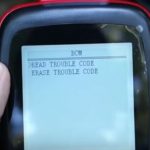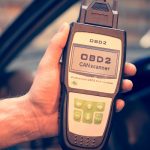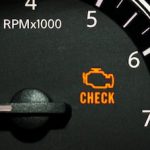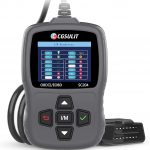When you’re driving your car, you’ve likely come across engine reader codes, such as P0133, EOBD, or TPMS. While you may be unsure what these codes mean, they are made up of letters and numbers that describe the general condition of your car. These codes are composed of single numbers from 0 to three, or 0-9. They can also include four and five-digit pairs, from 00 to 99.
P0133
The P0133 engine reader code is a warning to take your car to a mechanic. It can affect anything from luxury sedans to full-size 4x4s. Its symptoms are the same and can be caused by a variety of issues, including a damaged catalytic converter or faulty oxygen sensor. To find out if you should take your car in for service, use an online search engine like RepairPal to find a shop in your area. The repair shop will be able to provide an upfront estimate, and the work is backed by a minimum 12-month warranty.
The best way to diagnose P0133 is to perform a diagnostic test on your car with a scan tool utility. Although P0133 is universal in many vehicles, the repair steps may vary from model to model. If you’re not confident in your mechanic skills, you can consult a manual or subscribe to an online vehicle database such as ALLDATA. These tools will also allow you to access freeze frame data to determine the underlying cause of the problem.
A problem with the oxygen sensor is the most common cause of the P0133 trouble code. The oxygen sensor sends a voltage signal to the PCM, which then assesses the signal voltage to determine how much fuel is being burned. The voltage should switch from 400 mV to 450 mV within 100 milliseconds after the PCM enters closed-loop operation. If it doesn’t change faster, then the PCM will set the P0133 engine reader code.
Another way to diagnose P0133 is to have a mechanic diagnose the problem. Licensed mechanics can perform this service for a reasonable cost of $95 to $110, depending on the type of repair needed and the make and model of your car. The cost for the diagnostic will depend on how many other error codes the code has and the make and model of your car. A mechanic can charge anywhere from $35 to $200 an hour and a minimum of $100 for labor. Depending on the difficulty of the repair, the mechanic can charge more or less depending on how difficult the O2 sensor is to access and the parts you need to replace.
EOBD
The EOBD system came on the scene in the 1980s and was responsible for turning on the check engine light when a malfunction was detected. Prior to this, diagnosing a car’s problems was a cumbersome process that required mechanics to use different tools and read different trouble codes. The EOBD system also had many limitations. For example, the code DTC could be either specific to a particular manufacturer or a generic SAE code. In order to diagnose problems, mechanics had to use different tools for different makes and models.
An EOBD engine reader can retrieve OBD codes and help you troubleshoot the vehicle’s malfunctions. An OBD code consists of five numeric digits, each with a letter prefix. The first digit specifies the type of code, while the second indicates the system. The last two digits are specific to the fault designation and describe the specific problem in the car. In many cases, the EOBD reader can retrieve codes from a variety of devices, including a diagnostic scan tool.
The EOBD code is typically composed of several characters, starting with a generic code and a manufacturer-specific code. The next character identifies the specific part of the car that is impacted by the malfunction. For instance, “9” means that a transmission-related problem has occurred, while “8” denotes a sensor failure. Depending on the vehicle type, you may need an EOBD tool that is specific to your model.
Using an EOBD reader will give you accurate diagnoses of a car’s trouble codes. The codes will be stored in the car’s on-board computer. They are used to troubleshoot a car’s problem and identify possible repair solutions. The codes are usually defined by the SAE or the vehicle manufacturer and consist of one letter and four digits. The codes are usually classified into different systems, according to the manufacturer.
Active codes
Your car’s computer monitor has a few different functions. Some codes are active while others are pending. A pending code indicates that an emission control system malfunction has occurred. A permanent code can only be cleared after the root cause has been identified and the proper data has been collected. For instance, an oxygen sensor code P0171 will indicate a malfunction in the powertrain. Thankfully, there are several different ways to find and fix pending codes.
One way to tell if your car is displaying active fault codes is to check your car’s computer diagnostic software. Some programs have diagnostic scans available for a specific problem, but many of these are merely useless without the proper diagnostic tools. To determine if you need to replace a particular component, it’s important to understand which part is causing your car to display the fault code. This way, you can fix the problem and prevent a recurrence of the problem in the future.
Diagnostic trouble codes have two or three digits and are classified by manufacturer. These codes are grouped into generic or manufacturer-controlled systems based on the last three digits. OBD II codes are used to monitor the fuel and air ratio in a vehicle’s engine, while fuel injector codes are related to problems with the fuel injectors. Ignition codes, on the other hand, are triggered due to spark plug problems.
Pending codes
Using a code reader to diagnose your car can help you identify pending engine reader codes. These codes are not immediate warnings; they are a preliminary investigation into an engine problem. While they aren’t a major concern, repetitive or abnormal codes may be a sign of a more serious issue. The codes themselves are alphanumeric, with the first sequence of numbers being a letter and the remaining five being a number.
A pending code is a warning that a specific component is not working properly. In many cases, a pending code is an indicator that a specific test isn’t complete, but it’s still necessary to fix the problem. Pending codes are also known as pending DTCs. The computer has detected a problem with the car and is waiting for the next time it performs its monitor routine. If you find that a pending code is flashing on your dashboard, take your car to your dealer. They can document the problem and may be able to repair it for free. The only downfall is the fact that a pending engine reader code is unsatisfactory.
A basic understanding of automotive terminology will help you interpret a pending code. The main difference between a pending code and a stored code is that a pending code has not yet reached a threshold, whereas a stored code has already triggered an error light. Understanding the difference between a pending code and a stored code will save you time and money when determining which needs to be repaired. In any case, fixing the underlying problem will always come first.
Meaning of engine reader codes
If you see your car’s Check Engine Light coming on, you may be wondering what the codes mean. Engine reader codes are generated by a computer system in your vehicle. Each code is composed of five characters, the first of which is generic and the last is manufacturer specific. The next character tells you what specific area of your vehicle is impacted by the problem. A pending code indicates a failure in the emission control system. If the problem recurs, the Check Engine Light will come on.
These codes are often manufacturer-specific. They cover areas outside the emissions control system. The third character identifies the system that had a fault. Numbers one and two indicate problems in the fuel or air metering system. Numbers five and six are warnings for a problem with the mass air flow sensor. Unless you know what you’re looking for, you’re probably going to get confused with these codes.
If the Check Engine light is on, the problem likely lies in the cylinders’ control module. The faulty cylinders in the circuit can cause the Check Engine light to stay on or even come on while driving. Pending codes indicate errors that have occurred at least once and will become an Active Code if they happen again. Once you understand the meaning of these codes, you can determine whether the problem is in your vehicle’s engine or in another part of the car.
If you’ve ever had a car with a check engine light, you’re probably wondering what that means. This light is a signal that the engine’s onboard diagnostic system has detected a problem in your vehicle. A P0442 engine reader code, for example, indicates a leak in the evaporative emission system. Modern vehicles can generate hundreds of DTCs, so understanding these codes is crucial to ensuring your vehicle’s safety and improving your fleet’s ROI.






